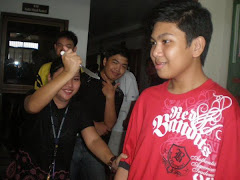In biology, mutations are changes to the nucleotide sequence of the genetic material of an organism. Mutations can be caused by copying errors in the genetic material during cell division, by exposure to ultraviolet or ionizing radiation, chemical mutagens, or viruses, or can occur deliberately under cellular control during processes such as hypermutation. In multicellular organisms, mutations can be subdivided into germ line mutations, which can be passed on to descendants, and somatic mutations, which cannot be transmitted to descendants in animals. Plants sometimes can transmit somatic mutations to their descendants asexually or sexually (in case when flower buds develop in somatically mutated part of plant). A new mutation that was not inherited from either parent is called a de novo mutation.
Mutations create variations in the gene pool, and the less favorable (or deleterious) mutations are reduced in frequency in the gene pool by natural selection, while more favorable (beneficial or advantageous) mutations tend to accumulate, resulting in evolutionary change. For example, a butterfly may produce offspring with a new mutation. Many times new mutations are harmful; a new mutation might change the color of one of the butterfly's offspring, making it harder (or easier) for predators to see. If this color change is an advantage, the chances of this butterfly surviving and producing its own offspring are a little better, and over time the number of butterflies with this mutation may form a larger percentage of the population.
Neutral mutations are defined as mutations whose effects do not influence the fitness of either the species or the individuals who make up the species. These can accumulate over time due to genetic drift. The overwhelming majority of mutations have no significant effect, since DNA repair is able to mend most changes before they become permanent mutations, and many organisms have mechanisms for eliminating otherwise permanently mutated somatic cells.
Mutations create variations in the gene pool, and the less favorable (or deleterious) mutations are reduced in frequency in the gene pool by natural selection, while more favorable (beneficial or advantageous) mutations tend to accumulate, resulting in evolutionary change. For example, a butterfly may produce offspring with a new mutation. Many times new mutations are harmful; a new mutation might change the color of one of the butterfly's offspring, making it harder (or easier) for predators to see. If this color change is an advantage, the chances of this butterfly surviving and producing its own offspring are a little better, and over time the number of butterflies with this mutation may form a larger percentage of the population.
Neutral mutations are defined as mutations whose effects do not influence the fitness of either the species or the individuals who make up the species. These can accumulate over time due to genetic drift. The overwhelming majority of mutations have no significant effect, since DNA repair is able to mend most changes before they become permanent mutations, and many organisms have mechanisms for eliminating otherwise permanently mutated somatic cells.
By effect on structure
Illustrations of five types of chromosomal mutations.
The sequence of a gene can be altered in a number of ways. Gene mutations have varying effects on health depending on where they occur and whether they alter the function of essential proteins. Structurally, mutations can be classified as:
Small-scale mutations, such as affecting a small gene is one or a few nucleotides, including:
Point mutations, often caused by chemicals or malfunction of DNA replication, exchange a single nucleotide for another[1]. Most common is the transition that exchanges a purine for a purine (A ↔ G) or a pyrimidine for a pyrimidine, (C ↔ T). A transition can be caused by nitrous acid, base mis-pairing, or mutagenic base analogs such as 5-bromo-2-deoxyuridine (BrdU). Less common is a transversion, which exchanges a purine for a pyrimidine or a pyrimidine for a purine (C/T ↔ A/G). A point mutation can be reversed by another point mutation, in which the nucleotide is changed back to its original state (true reversion) or by second-site reversion (a complementary mutation elsewhere that results in regained gene functionality). These changes are classified as transitions or transversions. An example of a transversion is adenine (A) being converted into a cytosine (C). There are also many other examples that can be found. Point mutations that occur within the protein coding region of a gene may be classified into three kinds, depending upon what the erroneous codon codes for:
Silent mutations: which code for the same amino acid.
Missense mutations: which code for a different amino acid.
Nonsense mutations: which code for a stop and can truncate the protein.
Insertions add one or more extra nucleotides into the DNA. They are usually caused by transposable elements, or errors during replication of repeating elements (e.g. AT repeats). Insertions in the coding region of a gene may alter splicing of the mRNA (splice site mutation), or cause a shift in the reading frame (frameshift), both of which can significantly alter the gene product. Insertions can be reverted by excision of the transposable element.
Deletions remove one or more nucleotides from the DNA. Like insertions, these mutations can alter the reading frame of the gene. They are generally irreversible: though exactly the same sequence might theoretically be restored by an insertion, transposable elements able to revert a very short deletion (say 1-2 bases) in any location are either highly unlikely to exist or do not exist at all. Note that a deletion is not the exact opposite of an insertion: the former is quite random while the latter consists of a specific sequence inserting at locations that are not entirely random or even quite narrowly defined.
Large-scale mutations in chromosomal structure, including:
Amplifications (or gene duplications) leading to multiple copies of all chromosomal regions, increasing the dosage of the genes located within them.
Deletions of large chromosomal regions, leading to loss of the genes within those regions.
Mutations whose effect is to juxtapose previously separate pieces of DNA, potentially bringing together separate genes to form functionally distinct fusion genes (e.g. bcr-abl). These include:
Chromosomal translocations: interchange of genetic parts from nonhomologous chromosomes.
Interstitial deletions: an intra-chromosomal deletion that removes a segment of DNA from a single chromosome, thereby apposing previously distant genes. For example, cells isolated from a human astrocytoma, a type of brain tumor, were found to have a chromosomal deletion removing sequences between the "fused in glioblastoma" (fig) gene and the receptor tyrosine kinase "ros", producing a fusion protein (FIG-ROS). The abnormal FIG-ROS fusion protein has constitutively active kinase activity that causes oncogenic transformation (a transformation from normal cells to cancer cells).
Chromosomal inversions: reversing the orientation of a chromosomal segment.
Loss of heterozygosity: loss of one allele, either by a deletion or recombination event, in an organism that previously had two different alleles.
By effect on function
Loss-of-function mutations are the result of gene product having less or no function. When the allele has a complete loss of function (null allele) it is often called an amorphic mutation. Phenotypes associated with such mutations are most often recessive. Exceptions are when the organism is haploid, or when the reduced dosage of a normal gene product is not enough for a normal phenotype (this is called haploinsufficiency).
Gain-of-function mutations change the gene product such that it gains a new and abnormal function. These mutations usually have dominant phenotypes. Often called a neo-morphic mutation.
Dominant negative mutations (also called anti-morphic mutations) have an altered gene product that acts antagonistically to the wild-type allele. These mutations usually result in an altered molecular function (often inactive) and are characterised by a dominant or semi-dominant phenotype. In humans, Marfan syndrome is an example of a dominant negative mutation occurring in an autosomal dominant disease. In this condition, the defective glycoprotein product of the fibrillin gene (FBN1) antagonizes the product of the normal allele.
Lethal mutations are mutations that lead the death of the organisms which carry the mutations.
Gain-of-function mutations change the gene product such that it gains a new and abnormal function. These mutations usually have dominant phenotypes. Often called a neo-morphic mutation.
Dominant negative mutations (also called anti-morphic mutations) have an altered gene product that acts antagonistically to the wild-type allele. These mutations usually result in an altered molecular function (often inactive) and are characterised by a dominant or semi-dominant phenotype. In humans, Marfan syndrome is an example of a dominant negative mutation occurring in an autosomal dominant disease. In this condition, the defective glycoprotein product of the fibrillin gene (FBN1) antagonizes the product of the normal allele.
Lethal mutations are mutations that lead the death of the organisms which carry the mutations.
By aspect of phenotype affected
Morphological mutations usually affect the outward appearance of an individual. Mutations can change the height of a plant or change it from smooth to rough seeds.
Biochemical mutations result in lesions stopping the enzymatic pathway. Often, morphological mutants are the direct result of a mutation due to the enzymatic pathway.
By inheritance
The human genome contains two copies of each gene- a paternal and a maternal allele.
Wildtype or Homozygous non-mutated is when neither allele is mutated.
A Heterozygous mutation is when only one allele is mutated.
A Homozygous mutation is when both the paternal and maternal alleles have an identical mutation.
Compound heterozygous mutations or a Genetic compound is when the paternal and maternal alleles have two different mutations.
Special classes
Conditional mutation is a mutation that has wild-type (or less severe) phenotype under certain "permissive" environmental conditions and a mutant phenotype under certain "restrictive" conditions. For example, a temperature-sensitive mutation can cause cell death at high temperature (restrictive condition), but might have no deleterious consequences at a lower temperature (permissive condition).
Causes of mutation
Two classes of mutations are spontaneous mutations (molecular decay) and induced mutations caused by mutagens.
Spontaneous mutations on the molecular level include:
Tautomerism - A base is changed by the repositioning of a hydrogen atom.
Depurination - Loss of a purine base (A or G).
Deamination - Changes a normal base to an atypical base; C → U, (which can be corrected by DNA repair mechanisms), or spontaneous deamination of 5-methycytosine (irreparable), or A → HX (hypoxanthine).
Transition - A purine changes to another purine, or a pyrimidine to a pyrimidine.
Transversion - A purine becomes a pyrimidine, or vice versa.
Benzopyrene, the major mutagen in tobacco smoke, in an adduct to DNA. Produced from PDB 1JDG.
Induced mutations on the molecular level can be caused by:
Chemicals
Nitrosoguanidine (NTG)
Hydroxylamine NH2OH
Base analogs (e.g. BrdU)
Simple chemicals (e.g. acids)
Alkylating agents (e.g. N-ethyl-N-nitrosourea (ENU)) These agents can mutate both replicating and non-replicating DNA. In contrast, a base analog can only mutate the DNA when the analog is incorporated in replicating the DNA. Each of these classes of chemical mutagens has certain effects that then lead to transitions, transversions, or deletions.
Methylating agents (e.g. ethyl methanesulfonate (EMS))
Polycyclic hydrocarbons (e.g. benzopyrenes found in internal combustion engine exhaust)
DNA intercalating agents (e.g. ethidium bromide)
DNA crosslinker (e.g. platinum)
Oxidative damage caused by oxygen(O) radicals
Radiation
Ultraviolet radiation (nonionizing radiation) excites electrons to a higher energy level. DNA molecules are good absorbers of ultraviolet light, especially that with wavelengths in the 260 to 280 nm range.[citation needed] Two nucleotide bases in DNA - cytosine and thymine-are most vulnerable to excitation that can change base-pairing properties. UV light can induce adjacent thymine bases in a DNA strand to pair with each other, as a bulky dimer.
Ionizing radiation
DNA has so-called hotspots, where mutations occur up to 100 times more frequently than the normal mutation rate. A hotspot can be at an unusual base, e.g., 5-methylcytosine.
Mutation rates also vary across species. Evolutionary biologists have theorized that higher mutation rates are beneficial in some situations, because they allow organisms to evolve and therefore adapt more quickly to their environments. For example, repeated exposure of bacteria to antibiotics, and selection of resistant mutants, can result in the selection of bacteria that have a much higher mutation rate than the original population (mutator strains).
Nomenclature
Nomenclature of mutations specify the type of mutation and base or amino acid changes.
Amino acid substitution - (e.g. D111E) The first letter is the one letter code of the wildtype amino acid, the number is the position of the amino acid from the N terminus and the second letter is the one letter code of the amino acid present in the mutation. If the second letter is 'X', any amino acid may replace the wildtype.
Amino acid deletion - (e.g. ΔF508) The Greek symbol Δ or 'delta' indicates a deletion. The letter refers to the amino acid present in the wildtype and the number is the position from the N terminus of the amino acid were it to be present as in the wildtype.
Types of mutations
Frameshift mutation
Frameshift mutation
A frameshift mutation is a mutation caused by indels, ie. inserts or deletes a number of nucleotides that is not evenly divisible by three from a DNA sequence. Due to the triplet nature of gene expression by codons, the insertion or deletion can disrupt the reading frame, or the grouping of the codons, resulting in a completely different translation from the original. The earlier in the sequence the deletion or insertion occurs, the more altered the protein produced is.
Point mutation
A point mutation, or substitution, is a type of mutation that causes the replacement of a single base nucleotide with another nucleotide. Often the term point mutation also includes insertions or deletions of a single base pair (which have more of an adverse effect on the synthesized protein due to nucleotides still being read in triplets, but in different frames- a mutation called a frameshift mutation).
Harmful mutations
Changes in DNA caused by mutation can cause errors in protein sequence, creating partially or completely non-functional proteins. To function correctly, each cell depends on thousands of proteins to function in the right places at the right times. When a mutation alters a protein that plays a critical role in the body, a medical condition can result. A condition caused by mutations in one or more genes is called a genetic disorder. However, only a small percentage of mutations cause genetic disorders; most have no impact on health. For example, some mutations alter a gene's DNA base sequence but don’t change the function of the protein made by the gene.
If a mutation is present in a germ cell, it can give rise to offspring that carries the mutation in all of its cells. This is the case in hereditary diseases. On the other hand, a mutation can occur in a somatic cell of an organism. Such mutations will be present in all descendants of this cell, and certain mutations can cause the cell to become malignant, and thus cause cancer.
Often, gene mutations that could cause a genetic disorder are repaired by the DNA repair system of the cell. Each cell has a number of pathways through which enzymes recognize and repair mistakes in DNA. Because DNA can be damaged or mutated in many ways, the process of DNA repair is an important way in which the body protects itself from disease.
Beneficial mutations
A very small percentage of all mutations actually have a positive effect. These mutations lead to new versions of proteins that help an organism and its future generations better adapt to changes in their environment. For example, a specific 32 base pair deletion in human CCR5 (CCR5-Δ32) confers HIV resistance to homozygotes and delays AIDS onset in heterozygotes.[6] The CCR5 mutation is more common in those of European descent. One theory for the etiology of the relatively high frequency of CCR5-Δ32 in the European population is that it conferred resistance to the bubonic plague in mid-14th century Europe. People who had this mutation were able to survive infection; thus, its frequency in the population increased.[7] It could also explain why this mutation is not found in Africa where the bubonic plague never reached. Newer theory says the selective pressure on the CCR5 Delta 32 mutation has been caused by smallpox instead of the bubonic plague.
In movies, it shows mutations in humans that result to superhuman capabilities... But in reality, that is not how mutation works... It is very rare that mutation has good effect on humans... In the topic above, it talks about mutation...
In the topic above, it explains all about mutation in genes... It talks about frame shift and point mutation... and it also explains about lethal and beneficial genes...
Mutaion, as mentioned before is the change in gene or chromosome of an organism. It is caused by exposure to radioactive elements, x-rays, UV-rays, and chemicals, toxins, drugs and sunlight... Mutation is very hard to reverse since every cell in your body has this genetic coding of the mutation... And unlike cancer which ends in the person, it is inheritable...
Mutation happens when there are changes in the chromosome structure and chromosome number. Changes in the genetic material usually shows unwanted characteristics. Chromosomes are structures inside the nucleus that contains the DNA... That's why it is irrevirsible and uncurable...
There are four kinds of changes in the chromosome structure... deletion, duplicaton, translocation and inversion. In deletion, there is a loss of fragment of chromosome during cell division. In duplicatoin, there is and addition of and extra identical fragment of chromosome to the original strand. While in translocation, a whole chromosome or fragment of it attaches itself to a chromosome in a different pair. And in invertion, a fragment of a chromosome may break free, turn itself completely around and attaches back itself in a reverse order... It may happen in the autosomes or from pair 1 to 22 or the sex chromosomes which is the pair 23...
Normal humans have 46 chromosomes... If there is one more or less that person is now mutated... There are many kinds of changes in the chromosome number... But lets stick to the basic 2 first... In monosomy, the zygote only recieves 1 chromosome instead of a patricular type instead of 2 chromosomes thus making it 45. In trisomy, the zyrote recieves 3 chromosomes of a particular tyoe instead of 2 thus making it abnormal... For one more or one less will defect the capabilities of a human to function well...
Nondisjunction is the failure of chromosomes to separate during cell division... Some cases of nondisjunction is Down syndrome, Edward's syndrome and Patau's syndrome... In down syndrome, there is the trisomy chromosome pair of 21. The individual with this sickness shows mental retardation, oriental eyes, below average height, cariadic malformations and underdeveloped sex organs... In Edward's syndrome, there is trisomy of chromosome pair 18. people with this tpye of sickness shows clenched fingers, deformed skull, feet and face. they usually die at around 3 to 4 months up to 2 years of age... While in Patau's syndrome, there is trisomy of chromosome pair 13. Inflicter individual shows mental ratardation,harelip and polydactility...
There are also some abnormalities of the sex chromosome... Let me give you some examples... In Klinefelter's syndrome, there is an extra X chromosome of the male. This person shows underdeveloped testes, female characteristics like braest formation and feminine body shape... In Turner's syndrome, there is monosomy of the X chromosome. Inflicted individual shows normal intelligence, underdeveloped secondary female characteristics and sterility... In Superfemale,there is trisomy in the X chromosome. People with this sickness ismentally retarded but fertile... While in Jacob's syndrome, there is trisomy in the male sex chromosome. There is an extra Y chromosome in this person's sex chomosome. Inflicted individual shows normal mentality, tall stature, some fertile and shows anti-social behavior as wellas violence....
Though mutation is inheritable, most of the people inflicted are sterile... So it rarely spreads...
Nature always finds a way to return to its natural course...
---m0iRa shErEeN g. viLlArEal---










.jpg)






.jpg)

.jpg)

No comments:
Post a Comment